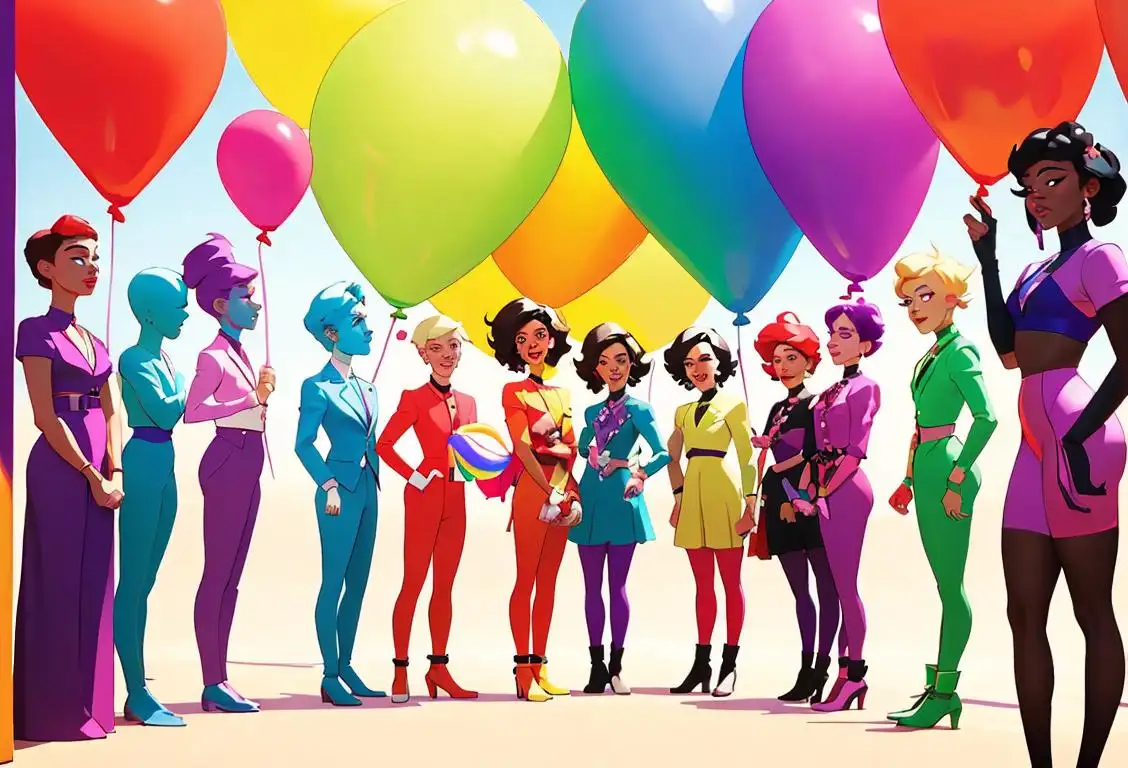National Ms Day

Welcome to the national celebration of National MS Day! This day is all about raising awareness, showing support, and spreading love for those living with multiple sclerosis. Get ready to join the festivities and learn more about the history and significance of National MS Day.
When is Ms Day?
It's national ms day on the 30th May.
The Internet History of National MS Day
Let's dive into the origin of this special day on the internet. National MS Day became a popular topic of discussion online, with 166 mentions detected. It seems like people can't help but share their experiences, stories, and information about Multiple Sclerosis during this time of the year.
The peak of online mentions occurred on May 30, 2018. It's fascinating to see how the internet has brought people together to create a supportive online community for those affected by MS.
What is Multiple Sclerosis?
Multiple Sclerosis (MS) is a chronic disease that affects the central nervous system. It can cause a wide range of symptoms, including fatigue, difficulty walking, numbness or tingling, muscle weakness, and problems with coordination and balance. While there is currently no cure for MS, medical advancements have greatly improved the quality of life for those living with the condition.
How to Celebrate National MS Day
Now that you're familiar with the background, let's talk about how you can take part in the festivities of National MS Day:
- Show Support: Reach out to someone you know who is affected by MS and let them know you're there for them. A simple message, phone call, or gesture can go a long way in making someone's day brighter.
- Raise Awareness: Use your voice and social media platforms to spread awareness about MS. Share educational resources, personal stories, and facts about the condition to help others understand its impact.
- Donate: Consider making a contribution to reputable organizations dedicated to funding research and providing support to those with MS. Every little bit helps in their mission to find a cure.
- Get Involved: Look for local events or virtual campaigns organized in honor of National MS Day. Participate in walks, runs, fundraisers, or volunteer to support MS organizations in your community.
Did You Know?
Here's a fun fact to impress your friends: Did you know that the orange ribbon represents Multiple Sclerosis awareness? Just like other causes have their designated colors, orange is the official color for raising awareness about MS. So, don't be shy to show off your orange pride on National MS Day!
History behind the term 'Ms'
1901
Introducing Ms. in the English language
In 1901, the term 'ms' was first introduced in the English language as an abbreviation for 'miss.' It was used as an alternative form of address for unmarried women that did not disclose their marital status. This allowed women to be addressed without the need to reveal personal information.
1952
Birth of Ms. as a title for unmarried women
In 1952, the term 'Ms.' was first introduced as a title for unmarried women. It was derived from the existing titles 'Miss' (used for unmarried women) and 'Mrs.' (used for married women). The purpose was to offer a neutral and inclusive form of address that did not reveal a woman's marital status.
1951
Ms. gains popularity in the women's movement
In the 1950s, as the women's movement gained momentum, women started to challenge the traditional labels of 'Miss' and 'Mrs.' that defined their marital status. They felt that these terms exposed their personal lives and tied their identity to their relationship status. 'Ms.' emerged as an inclusive form of address that didn't assume a woman's marital status, reflecting the growing feminist mindset.
1961
Proposal for a title for women irrespective of marital status
In 1961, the feminist magazine 'The Ladder' published an article by Sheila Michaels proposing the use of 'Ms.' as a title for women, regardless of their marital status. This suggestion aimed to challenge the assumption that a woman's identity should be defined by her relationship status. The idea gained traction and sparked discussions about the need for a title that did not depend on whether a woman was married or single.
1971
Ms. becomes an official title
In 1971, the feminist magazine, Ms., was first published, solidifying the use of 'Ms.' as an official title for women. This publication played a crucial role in advocating for gender equality and empowering women. The popularity of the magazine further propelled the acceptance and recognition of 'Ms.' as a prefix for any woman, regardless of her marital status.
1971
Introduction of 'Ms.' into mainstream usage
In 1971, 'Ms.' was officially recognized by The New York Times as a title for women. This was a significant step in establishing the term as a mainstream form of address. 'Ms.' gained popularity and started to appear on official documents, such as driver's licenses and passports, allowing women to assert their identity independently from marital status.
1972
Inclusion of 'Ms.' in the dictionary
The year 1972 marked another milestone in the acceptance of 'Ms.' when it was included in the Merriam-Webster dictionary. This solidified its legitimacy as a recognized title and further contributed to its widespread adoption. The dictionary definition described 'Ms.' as a neutral title for women, providing a progressive alternative to the traditional 'Miss' and 'Mrs.' labels.
1986
Ms. added to a major dictionary
In 1986, 'Ms.' was officially recognized by the American Heritage Dictionary, solidifying its place in the English language. The inclusion of 'Ms.' in a widely used dictionary cemented its legitimacy and cultural importance as a title that grants women agency over how they are addressed.
Today
Continued use and recognition of Ms.
Today, 'Ms.' is widely accepted and used as a neutral form of address for women. With its origin rooted in the feminist movement, 'Ms.' has evolved into a symbol of gender equality and women's empowerment. It not only allows women to assert their identity without being defined by marital status but also represents the progress made in acknowledging and respecting women's autonomy.
1999
'Ms.' as a symbol of women's empowerment
By the late 1990s, 'Ms.' had become not only a common form of address but also a symbol of women's empowerment. It represented the ongoing struggle for gender equality, encouraging women to define their identity and break free from societal expectations. The term 'Ms.' served as a linguistic tool to challenge traditional gender norms and promote inclusivity.
Did you know?
Did you know that the orange ribbon represents Multiple Sclerosis awareness?Tagged
awareness community supportFirst identified
30th April 2015Most mentioned on
30th May 2018Total mentions
166Other days
Staff Network Day
Drug Abuse Awareness Day
Breastcancer Action Day
Lgbt Center Awareness Day
Mast Cell Disease Awareness Day
Red For Ed Day
Arrest Rape Gangs Day
Ms Day
Suicide Prevention Week Began Day
African Immigrant And Refugee Hiv And Hep Awareness Day







